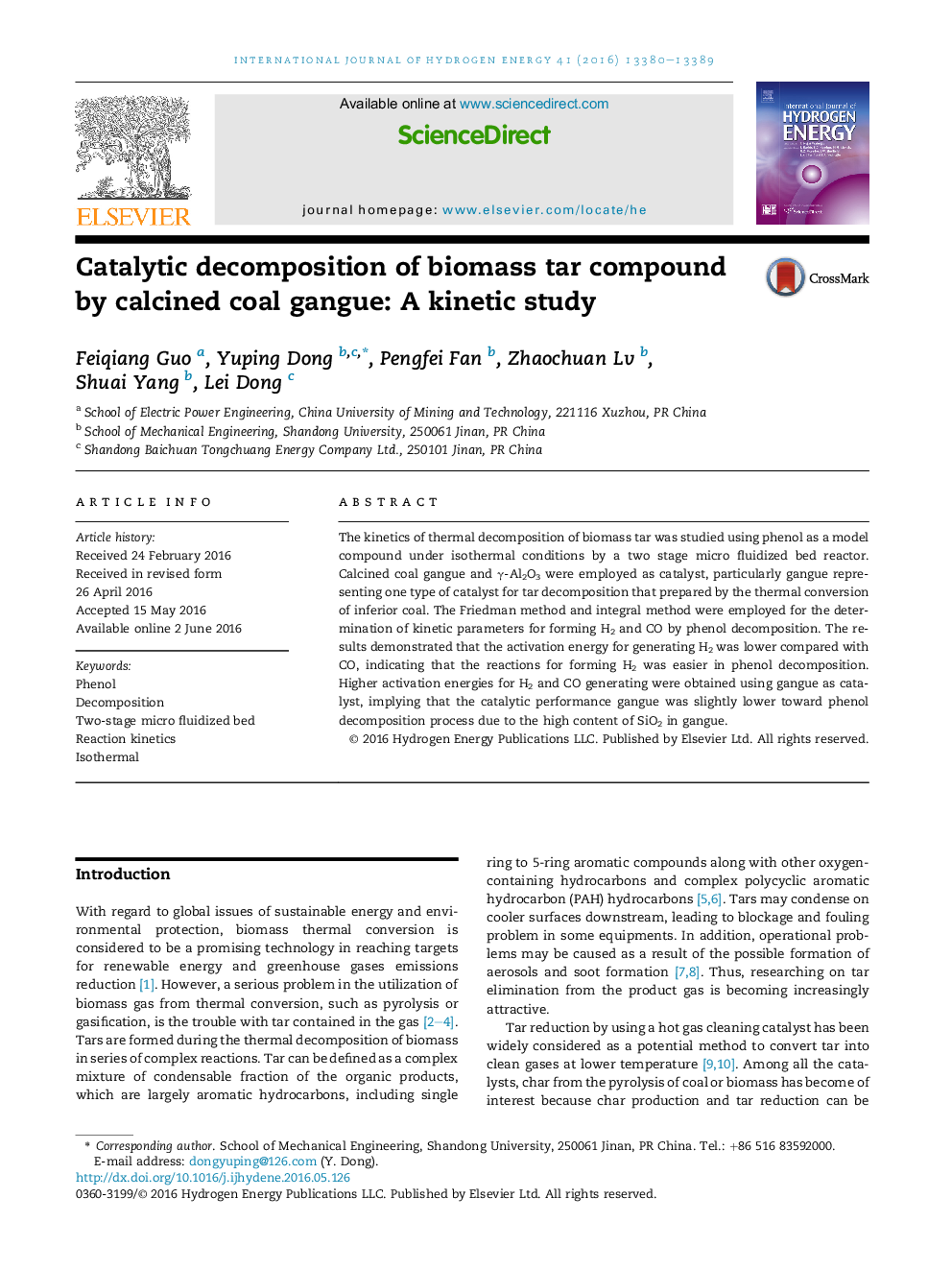| Article ID | Journal | Published Year | Pages | File Type |
|---|---|---|---|---|
| 1276451 | International Journal of Hydrogen Energy | 2016 | 10 Pages |
•Phenol decomposition kinetics was studied under isothermal condition.•Calcined gangue was chosen as catalyst toward biomass tar.•The values of activation energy for generating H2 and CO were obtained.•Catalytic characteristics of calcined gangue and γ-Al2O3 were further revealed.
The kinetics of thermal decomposition of biomass tar was studied using phenol as a model compound under isothermal conditions by a two stage micro fluidized bed reactor. Calcined coal gangue and γ-Al2O3 were employed as catalyst, particularly gangue representing one type of catalyst for tar decomposition that prepared by the thermal conversion of inferior coal. The Friedman method and integral method were employed for the determination of kinetic parameters for forming H2 and CO by phenol decomposition. The results demonstrated that the activation energy for generating H2 was lower compared with CO, indicating that the reactions for forming H2 was easier in phenol decomposition. Higher activation energies for H2 and CO generating were obtained using gangue as catalyst, implying that the catalytic performance gangue was slightly lower toward phenol decomposition process due to the high content of SiO2 in gangue.
